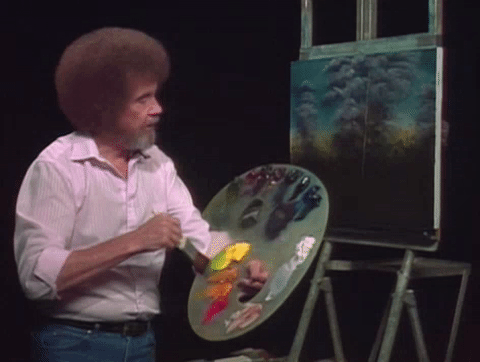If you think you’re saving money by buying a “good enough” Customer Success solution, think again.

Buying a Customer Success solution is a lot like buying art supplies. When you’re starting out, the $1 paints seems like a smarter choice than the $3 paints. You might think, “It’s cheaper and I’m new to this ‘art thing’—I don’t need to be using the same paints as the professionals because I’m just practicing…right?” It might seem logical at this point in your artistic journey, but you’ll soon find that the materials you invest in will strongly impact the final result. The same goes for CS software—while something may seem like a good enough option now, making the wrong tech decisions can cost you in the long-run.
With literally thousands of software options out there, there’s a lot of legwork that goes into choosing the right one for your situation. Do you invest in a tool that will grow with you, or do you choose the option that’s cheaper but you’ll eventually outgrow? It can be easy to lean towards the latter—it costs less upfront, it’s experimental, it covers most of our needs—the list goes on. So, what’s the difference between a “good enough” solution and the “best fit” solution?
“Good Enough” Solution
- Short-term
- May cost less upfront
- Limited capabilities
- Not scalable
“Best Fit” Solution
- Long-term
- May cost more upfront
- Robust functionality
- Scales with your business
Customer Success is an integral part of recurring revenue businesses, which means that the solution you choose carries a lot of weight. Especially when it means the difference between keeping customers or losing them. The typical risks of wasted time and money spent rip-and-replacing your old solution can increase tenfold if it also means that customers are churning during all of that.
Switching solutions is expensive
When it comes to buying and implementing software solutions of any type, it’s an arduous process. You have to scope out the market, get budget, compare options, onboard your team, increase adoption, and so on and so forth. It can be so tempting to want to get it done with quickly so you can get right to reaping that sweet, sweet ROI. But imagine having to go through that process again after you realize you’ve made the wrong decision. That’s why it’s crucial that you take your time to find a “best fit” solution.
Here are the additional costs you’ll incur when you make the switch from a “good enough” solution to a “best fit” solution:
- The cost of the new software
- The cost of reimplementation
- The cost of any additional onboarding, training, or Professional Services costs that come with your new software
- The potential cost of breaking a contract with your “good enough” solution
Buying the wrong software is also a huge time sink. There’s the time it takes for your team to realize that it’s not effective—this tends to happen after you’ve already spent weeks implementing and onboarding. Even after you’ve determined that it’s time to find a better solution, there’s a lag time between this realization and when action is finally taken to rectify it. On top of all this, companies often try to find workarounds for the problems they’re experiencing before they decide it’s time to restart the software evaluation process. This all adds up to time that could be spent growing your CS strategy and increasing revenue.
If you don’t start while you’re small, you risk staying that way
Don’t let your size or CS maturity stage hold you back. Choosing a product with limited capability can actually stunt your growth. In fact, “best fit” solutions may exceed expected ROI, propelling you forward. Customer Success is a revenue driver. If your software doesn’t have the capabilities to tap into this source of revenue, it’s not just slowing down the growth of your CS org, but the growth of your entire company.
Software is a means of enablement—it doesn’t directly drive results. Just like with art supplies, you don’t buy paints and a canvas and suddenly have a masterpiece. You still have to create the art. You need to know how to use your chosen medium and an understanding of fundamental artistic techniques. It also doesn’t hurt if you have a network of great artists at your disposal that share their methods and processes. Your company needs that same type of support from the vendor you ultimately choose.
You don’t start a company with the intentions of not growing, so assuming all goes to plan, there will come a time when you will absolutely need a powerful CS solution. While driving advocacy, establishing stakeholder alignment, and creating a tech-touch approach may seem far off in the future, they’re elements you’ll eventually need to incorporate. We call it a crawl, walk, run approach. When you’re starting out, you need a core set of capabilities to give you a solid foundation to work with. When you’re ready to walk, those capabilities expand, and so on. When you’re ready to take yourself from one stage to the next, you need a best-fit solution that fits your needs now and will scale with you.
Best Fit solution checklist

The best fit for one company might not be the same for another. So how do you know if a software is right for you? There are some key factors your “best-fit” software will have. Consider the following:
- Our Elements of Customer Success offers a framework of processes that together create a mature CS strategy. Will your chosen solution grow with you through these three stages?
- The vendor you choose is just as important as the solution and can deeply affect your success. How does your vendor support your growth? Do they offer events and learning opportunities? Does your chosen vendor give you access to best practices that their successful customers use?
- Customer Success requires company-wide buy-in. How does your solution help you work cross-functionally with other departments?
- Are you eliminating options because they are out of your budget? Consider the ROI of a best fit solution and the costs of switching.
Our CEO, Nick, wrote a very in-depth guide to buying software that includes some checklists and frameworks and reveals some blindspots most people have when looking at Customer Success software. It’s incredibly valuable because it’s 100% Gainsight-agnostic.
As Amazon CEO, Jeff Bezos once said, “It’s not an experiment if you know it’s going to work.” Customer Success is a proven revenue driver and an important component of business health. Investing in the right CS software now will not only help you grow faster, but ensure that your company does so sustainably.

